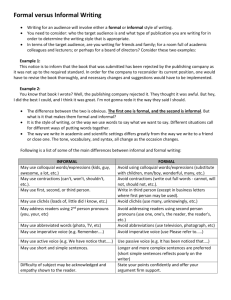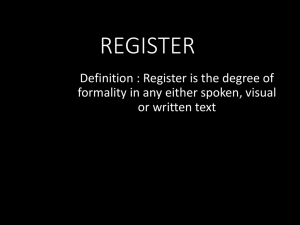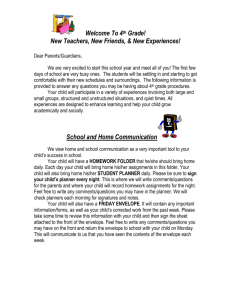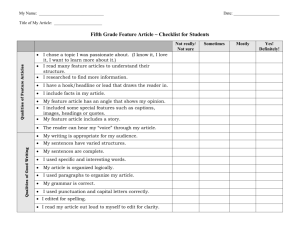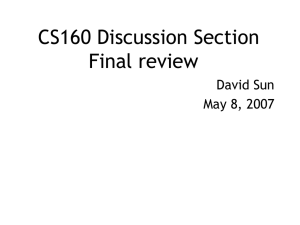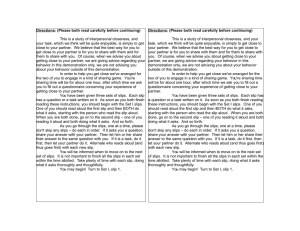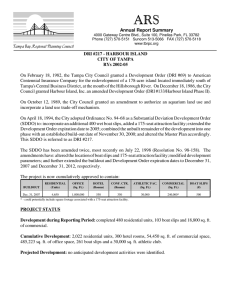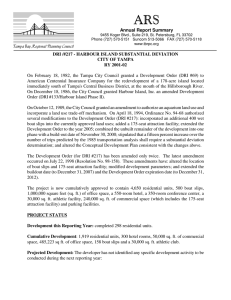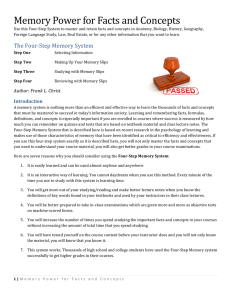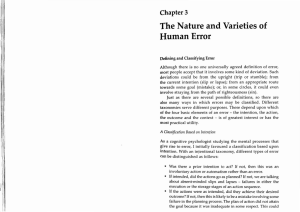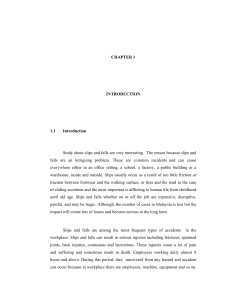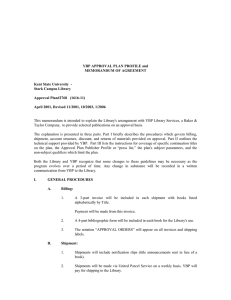Formal and Informal Writing – TR 1 GRADE LESSON
advertisement
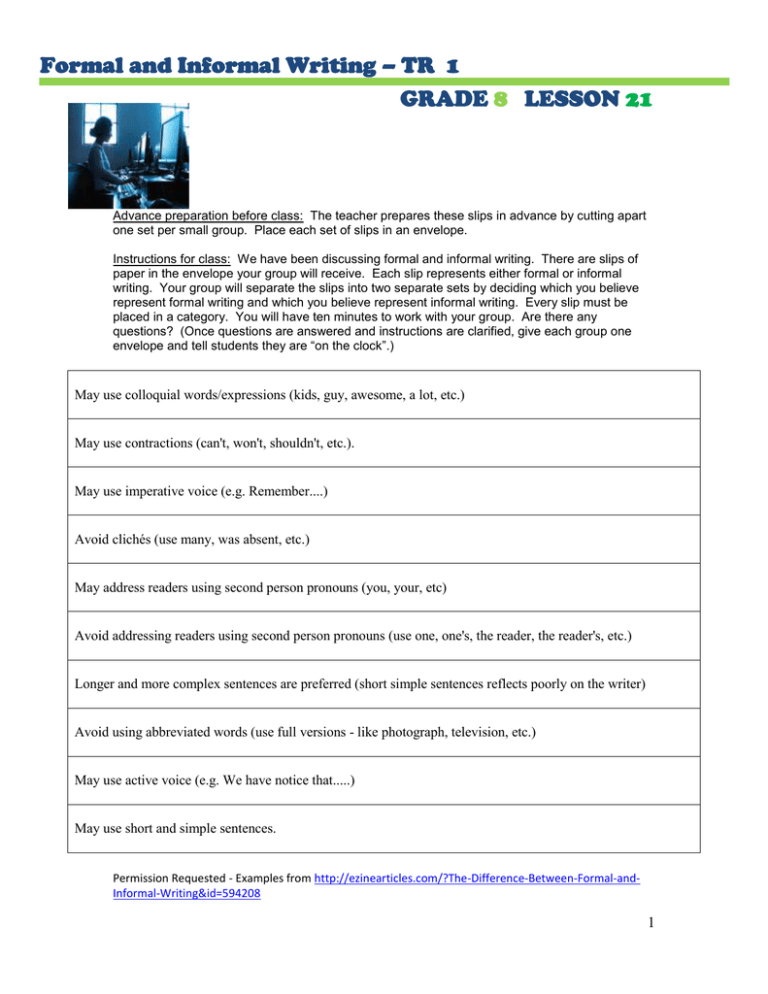
Formal and Informal Writing – TR 1 GRADE 8 LESSON 21 Advance preparation before class: The teacher prepares these slips in advance by cutting apart one set per small group. Place each set of slips in an envelope. Instructions for class: We have been discussing formal and informal writing. There are slips of paper in the envelope your group will receive. Each slip represents either formal or informal writing. Your group will separate the slips into two separate sets by deciding which you believe represent formal writing and which you believe represent informal writing. Every slip must be placed in a category. You will have ten minutes to work with your group. Are there any questions? (Once questions are answered and instructions are clarified, give each group one envelope and tell students they are “on the clock”.) May use colloquial words/expressions (kids, guy, awesome, a lot, etc.) May use contractions (can't, won't, shouldn't, etc.). May use imperative voice (e.g. Remember....) Avoid clichés (use many, was absent, etc.) May address readers using second person pronouns (you, your, etc) Avoid addressing readers using second person pronouns (use one, one's, the reader, the reader's, etc.) Longer and more complex sentences are preferred (short simple sentences reflects poorly on the writer) Avoid using abbreviated words (use full versions - like photograph, television, etc.) May use active voice (e.g. We have notice that.....) May use short and simple sentences. Permission Requested - Examples from http://ezinearticles.com/?The-Difference-Between-Formal-andInformal-Writing&id=594208 1

